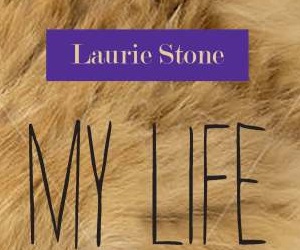On October 9, I was booked by my publicist to appear on Studio A, an interview show on WKCR, where writers read from new books. At the host’s request, I sent texts, assuming she wanted to know about me, not vet the writing. Three hours before my appearance she sent an email saying, “Some particular lines in your selections do not reflect our station’s values and more importantly our university’s values . . . [A]s a Columbia University affiliate radio station we cannot air something that says ‘I think women who live in secular countries and conform to religious dress codes make the lives of all women less free and less safe’.” I was told I could come on the show “with the line . . . explicitly censored, but there is no wiggle room on the censorship, to be clear.” I wrote back cancelling. The station afterward apologized to an unnamed guest but did not define the offense, and now, two weeks later, I still do not know its nature. It strikes me that, when defending the rights of trans people, it is kosher on college campuses to sweep the gender binary into the trash bin of history. Great! But somewhere along the line it has become kosher as well to defend the gender binary when women comply with gendered dress codes or are coerced into appearing to.
The offending sentence is spoken by the narrator of a fictional story, by the way, and this narrator is not calling for limits on anyone’s freedom. She is dissenting from all religions, which she sees as propping up male supremacy. In all religions, in my view, femaleness is constructed as a contaminate of maleness that must be kept separate, lest it pollute and degrade maleness. How do you keep it separate? You confine and control the female body, especially the sexual female body. You designate separate seating and ritual cleansings for it. You determine whether it can freely engage in sexual behavior. You maim and kill it if it expresses desires that threaten the sovereignty of males to control it. You attach notions of modesty, honor, and purity to it that constrict and sometimes destroy it. You determine it must be draped and shorn to limit its sexual power over males or just to show males run things. All clothing and body styles enforced by religions—nun’s habits, the orthodox Jewish woman’s shaved head topped by an evidently fake wig, the Muslim burka—underpin essentialist and freedom-constricting depictions of the female body and the life lived in that body. If you are female and watch the normalization of the controlled female body, you feel alarmed. It has a chilling effect on the surrounding society, lending tacit permission and legitimacy to the sexual double standard that always lurks, ready to surface, as we have witnessed in this election. What happens to women anywhere under structures of sexism and misogyny happens in some measure to all women everywhere. What about women who chose to conform to dress codes when their lives and safety are not threatened? That brings us back to the statement in the story. The speaker of the sentence believes women in all societies are trained to put their own interests second. She thinks this is an injury sexism and misogyny carve on female minds. The speaker knows there are times when loyalties inside a single person may be divided and not all contradictions can be resolved. She still thinks you have to pick a side or it picks you, and she picks the cause of bodily freedom for women.
— Laurie Stone‘s most recent book is My Life as an Animal.
